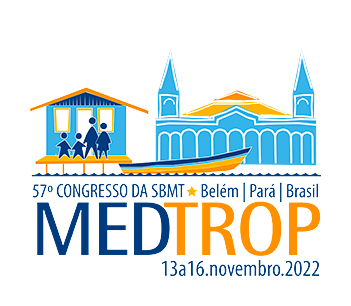Dados do Trabalho
Título
ENTEROPARASITES OF HUMAN OR ANIMALS WITH ZOONOTIC POTENTIAL IN SOIL OF A GUARANI INDIGENOUS VILLAGE IN SOUTHERN BRAZIL
Introdução
Several species of parasites are disseminated mainly by transmission through water and soil. The presence of intestinal parasites in the soil is characterized as a bioindicator of poor sanitary quality. Indigenous populations are economically disadvantaged, with poor health education and lack of basic sanitation infrastructure, become highly vulnerable to these parasitic infections.
Objetivo(s)
The aim of the current study was to investigate the presence of intestinal parasites of humans or animals with zoonotic potential in the soil of a Guarani indigenous village in Paraná, southern Brazil, to determine the degree of contamination and the associated variables.
Material e Métodos
The collection of fecal samples was carried out in the peridomicile of the houses of the village, in different places where both humans and animals have direct contact with the soil. For this purpose, the centrifugal-flotation (Faust et al.), spontaneous sedimentation (Lutz) and the Rugai methods were modified and used to investigate the presence of parasitic forms (cysts, oocysts, eggs, and larvae) in the soil.
Resultados e Conclusão
Among 68 places analyzed, 52 (76.0%) had positive soil samples for at least one species of parasite with potential pathogenicity to humans. The soil of the researched village is clayey, and the main parasitic elements identified in the samples were: rhabdtoid and filarioid larvae of Strongyloides stercoralis (75%), rhabdtoid and/or filarioid larvae of hookworm (22.1%) and eggs of Ascaris lumbricoides/suum (16.2%), reflecting the inadequate sanitary conditions. Some residents of the village still have the habit of defecating on the ground and the animals are raised loose close to the houses, important risk factors for peridomicile contamination. The implementation of actions aimed at health education from early childhood, sanitary improvements, surveys and epidemiological tracking, monitoring, and prophylactic drug treatment with antiparasitics, could minimize the risks of transmission of waterborne diseases and caused by contact with contaminated soil, especially intestinal parasites, maximizing the well-being and quality of life of the indigenous population.
Palavras-chave
Indigenous health, Soil contamination, Intestinal parasitic diseases, Basic sanitation, Helminths.
Área
Eixo 01 | Ambiente e saúde
Categoria
NÃO desejo concorrer ao Prêmio Jovem Pesquisador
Autores
Veridiana Lenartovicz Boeira, Marina Silva Carvalho, Eloiza Cristina Martelli, Eloisa Rosa Winiarski, Leyde Daiane Peder, Cristiane Maria Colli, Max Jean Ornelas Toledo
